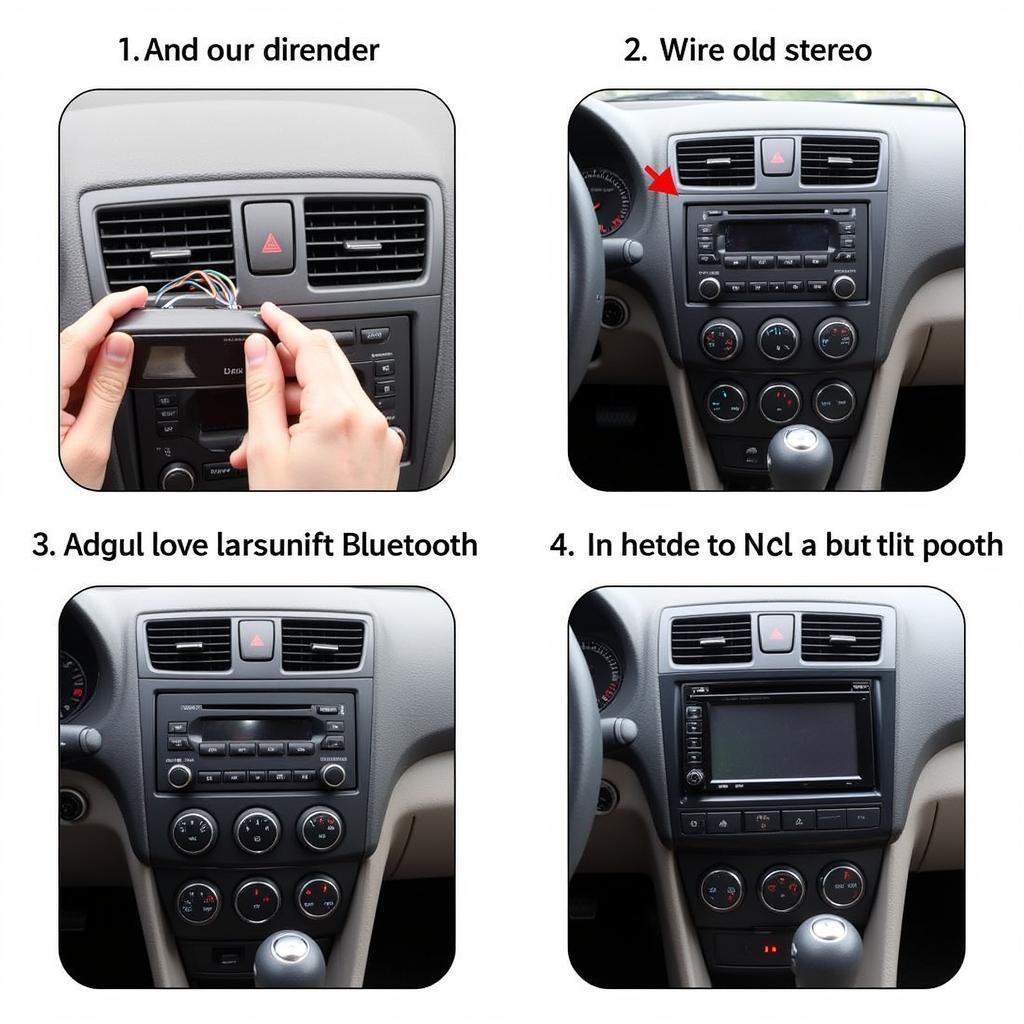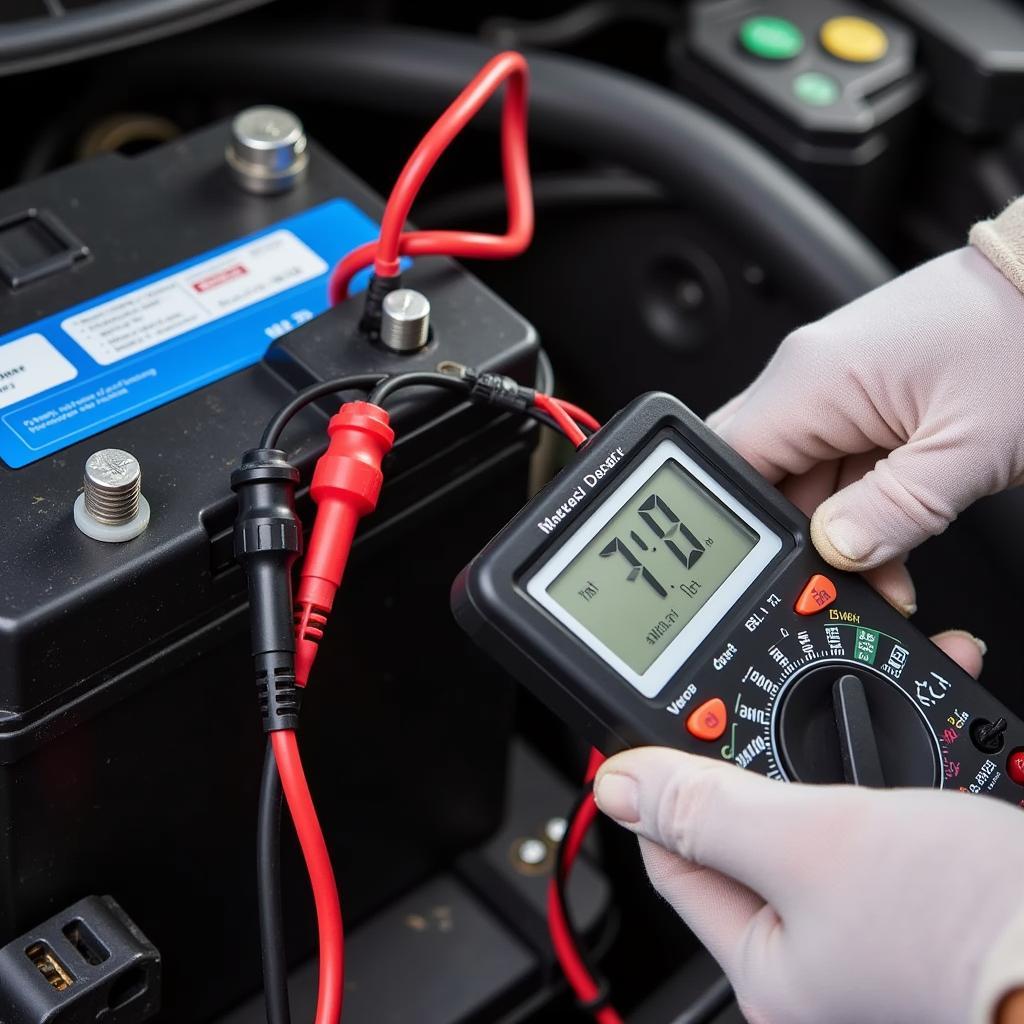Is your 2002 Ford Escape refusing to start, flashing ominous lights at you, or acting like it’s possessed by a security gremlin? You’re likely dealing with a triggered anti-theft system. Don’t worry, we’re here to guide you back to automotive harmony. This article will walk you through the most common causes, symptoms, and solutions to reset your Ford Escape’s anti-theft system.
Understanding Your Ford Escape’s Anti-theft System
Before we delve into the how-to, let’s understand why your Ford acts like a guarded fortress. The anti-theft system, also known as the Passive Anti-Theft System (PATS), is designed to deter theft by preventing the engine from starting without the correct key. It does this by using a transponder chip in your key that sends a unique code to the vehicle’s computer. When the codes match, you’re good to go. When they don’t, you’re stuck.
Common Causes of Anti-theft System Issues
- Weak Battery in Key Fob: Just like your car battery, your key fob battery can die, disrupting the signal to your vehicle.
- Faulty Ignition Cylinder: The ignition cylinder reads the signal from your key. Wear and tear can cause it to malfunction.
- Malfunctioning Anti-theft Module: This is the brain of the operation. If it’s not working correctly, it can misinterpret signals and lock you out.
Recognizing the Tell-tale Signs
So, how do you know if your anti-theft system is acting up? Here are some common symptoms:
- Rapidly Flashing Security Light: This is often the most obvious sign.
- Engine Cranks but Won’t Start: Your engine is trying, but something is preventing it from firing up.
- Clicking Sounds when Trying to Start: This could indicate a problem with the starter motor, potentially linked to the anti-theft system.
Tools You Might Need
- Spare Key: It’s always a good idea to have a backup.
- Battery Tester: To check your key fob battery.
- Code Reader: This handy tool can read and sometimes clear fault codes in your car’s computer, including those related to the anti-theft system. Some advanced code readers, like those offered by Cardiagtech, may even offer additional functionality for diagnosing and resetting anti-theft systems.
Resetting Your Anti-theft System: Methods to Try
Method 1: The Key Fob Battery Swap
- Check your key fob battery and replace it if necessary.
- Try starting your car again.
Method 2: The Door Lock Reset
- Insert your key into the driver’s side door lock.
- Turn the key to the “unlock” position and hold it there for 30 seconds.
- Return the key to the “lock” position and remove it.
- Attempt to start your vehicle.
Method 3: The Battery Disconnect
Important: Disconnect the battery only as a last resort and proceed with caution.
- Disconnect the negative (black) terminal of your car battery and wait for 15 minutes.
- Reconnect the negative terminal.
- Try starting your car.
FAQs: Addressing Common Questions
Q: Can I bypass the anti-theft system on my Ford Escape?
A: We strongly advise against attempting to bypass the anti-theft system. It’s there for your protection, and tampering with it can lead to further damage and potential legal issues.
Q: My car still won’t start after trying these methods. What should I do?
A: It’s time to call in the pros. A qualified mechanic or an auto electrician can diagnose the issue more thoroughly. They can also use specialized diagnostic tools to communicate with your car’s computer and pinpoint the problem.
When in Doubt, Seek Professional Help
While DIY fixes can be satisfying, sometimes the best course of action is to consult a professional. “When dealing with complex electronic systems like the PATS, it’s crucial to have the right expertise and tools,” advises automotive electronics specialist, Dr. Emily Carter, author of “Automotive Electronics Demystified”.
Remember, Cardiagtech offers a range of professional-grade diagnostic tools that can help identify and resolve complex car issues, including those related to anti-theft systems.



